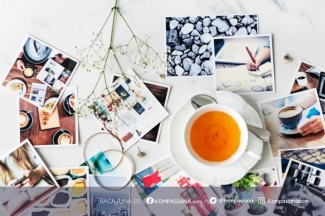Needless to say, Japanese culture is amazingly unique. The world is enchanted by their politeness, graceful gesture and elegant way of doing things. Blessed with golden opportunity to spend three and a half years living among Japanese people, I tried my best to embrace this wonderful nation's culture the most possible I could during that quite short period.
The first and foremost to start with was certainly how to communicate with the local people. Unexpectedly I found Nihongo (日本語), Japanese national language to be very interesting; it captured my heart right away. I spent most part of the week hopping on and off to several Japanese classes.
I attended classes tended by voluntary teachers at Ashiya Cosmopolitan Association (ACA), where we were warmly welcomed nearly free of charge! They only charged ¥100 per 90-minute lesson, which was more or less equal to $1 only. The system was one teacher for one student, and there would be rotation every three months or so. Other than language classes, they had various lessons of Japanese culture.
I also had a chance to study at Oppe Circle, another semi-volunteer group of teachers. For the first few months a teacher came to my place once a week. Apart from Japanese, she taught me lots of things including how to cook Takoyaki. She was also the first person who introduced me to Onsen, Japanese hot bath.
After that the lessons continued at the residence of another sensei whose name meant "a thousand stars". She lived in Nigawa, a city bordering with Nishinomiya, where we lived. That way I had a chance to get first-hand experience of real Japanese daily life. Two to three times a week we would sit there in her tatami living room facing various Nihongo textbooks, discussing about Japanese as well as Indonesian people, customs, foods, proverbs, etc. In springtime she used to give me ikanago, a special spring dish, along with a bottle of umeshuu, sort of wine made from ume (plum) that she made with her own hand.
Furthermore, I went to YWCA (Young Woman's Christian Association) to study in a more formal class. I had to pay a little more but it was really worth it, and actually was not that expensive compared to other formal Japanese schools.
It started out one summer when they had free trial classes during summer holiday. I happened to get the brochure and offered my friends, the ladies from KJRI Osaka who were interested. So the four of us went together every day for two weeks, though we were in different classes according to the level of proficiency (they had qualification test beforehand to determine which class you were supposed to be in).
The level certainly depended highly on how long you had been in the country, although this was not always the case. Sometimes it depended on your interest, passion, and willingness to learn more than your length of stay. I met a German lady in ACA who had been living in Japan for nine years but could barely speak. She admitted to me herself that she had been too lazy, haha...
I was placed in the highest class, mostly for having been the longest one staying in Japan. Our family had been the oldest ‘batch’ in KJRI Osaka that summer. I had a wonderful time with fellow students from China, South Korea, Vietnam, and USA. Some of us became friends and occasionally met from time to time after the summer program was over. They came to our apartment once, and another time we visited our nice friend, I-san, a South Korean pastor with his lovely wife and three daughters in Himeji (home to Himeji Castle, where Tom Cruise and Ken Watanabe had profound conversations in “The Last Samurai”).
When the (free) summer program was over, we were (naturally) offered to attend regular, paid classes. Since that summer of 2005 was our last in Japan and I intended to take higher level of Japanese Language Proficiency Test/JLPT (Nihongo Nouryoku Shiken) in December, I had to seriously consider attending preparatory courses dedicated specifically for the test.
JLPT had four levels of difficulty that time (now they have renewed the system to five levels). The most basic was Level 4 (yon kyuu), which required the mastery of only 100 Kanji. Level 3 (san kyuu) obliged one to master 300 Kanji letters, 1000 for Level 2 (ni kyuu) and 2000 for Level 1 (i kyuu).
